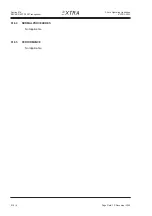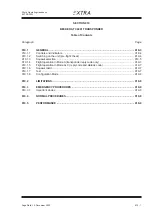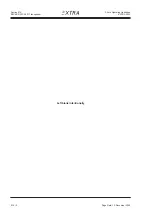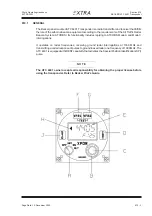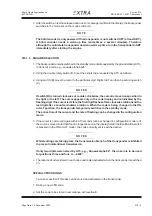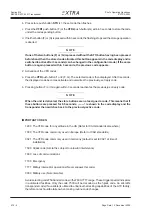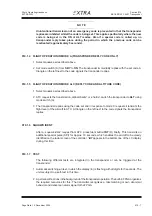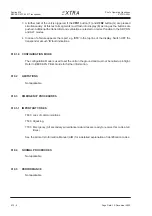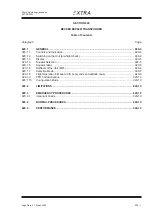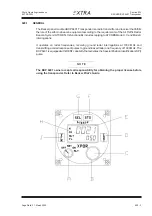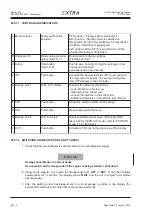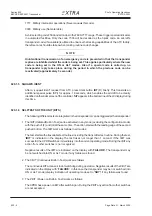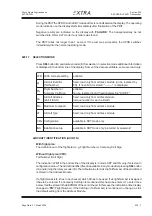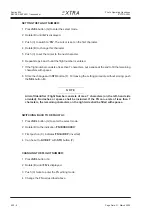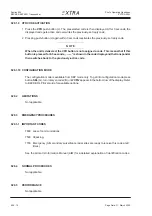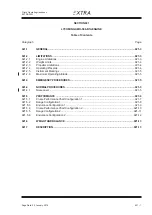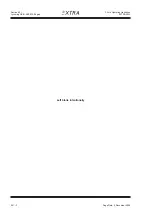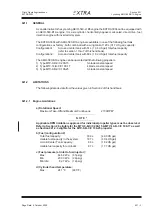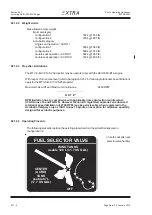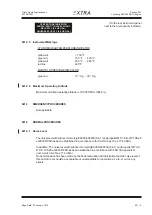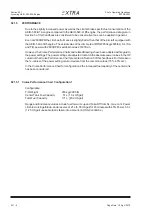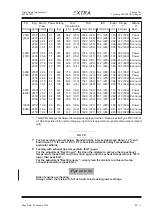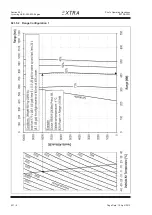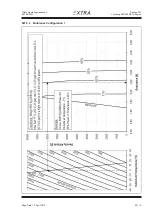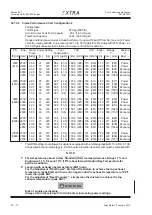
920 - 6
Page Date: 31. March 2009
Pilot´s Operating Handbook
EXTRA 300L
Section 920
BECKER BXP 6401 Transponder
7777 Military interceptor operations (Never squawk this code)
0000 Military use (Not enterable)
Avoid selecting code 7500 and all codes in the 7600-7777 range. These trigger special indicators
in automated facilities. Only the code 7500 will be decoded as the hijack code. An aircraft’s
transponder code (if available) is utilized to enhance the tracking capabilities of the ATC facility,
therefore care should be taken when making routine code changes.
N O T E
Unintentional transmission of an emergency code is prevented in that the transponder
replies are inhibited whilst the code is being set. This applies particularly where the new
code is being set in the ON or ALT modes. Also if a special code is called up, no
transponder reply takes place during the period in which the previous code can be
reactivated (approximately 3 seconds).
920.1.5
SQUAWK IDENT
After a „squawk ident“ request from ATC, press Ident button
IDT
(D) briefly. This transmits an
additional special pulse (SPI) for approx. 18 seconds, which enables the aircraft to be clearly
identified on the radar screen of the controller.
'Idt'
appears in the bottom line of the LC display during
this time.
920.1.6
SELFTESTS OF THE UNIT (BITS)
The following different tests are integrated in the transponder or can be triggered at the transponder:
1 The IBIT (Initiated Built-in Test) can be activated in any mode (excluding the configuration mode)
with the push of (F) and (G) at the same time. The action starts with the leading edge of the second
pushed button. The IBIT works as follows in all modes:
The test starts with all available test routines including the transmitter test routine. During the test,
'
IBIT
' is indicated on the display.The test takes not longer than 1 second. If the IBIT was
successful, the XPDR switches immediately into the normal operating mode. During the IBIT any
action from other switches is not recognized.
Negative results of the IBIT are indicated on the display with '
FAILURE
'. The transponder may
be not switched into ON or ALT mode if any failure was found.
2 The CBIT (Continuous Built-in Test) works as follows:
The continuous BIT acts as a kind of watchdog during operation. Negative results of the CBIT are
indicated on the display with '
FAILURE
'. In this case the transponder may be not switched into
ON or ALT mode (display indication of operating mode set to
'SBY'
) if any failure was found.
3 The PBIT (Power-on Built-in Test) works as follows:
The XPDR has a power-on BIT after switching on. During the PBIT any action from other switches
are not accepted.
Summary of Contents for 300L
Page 2: ...Left blank intentionally ...

